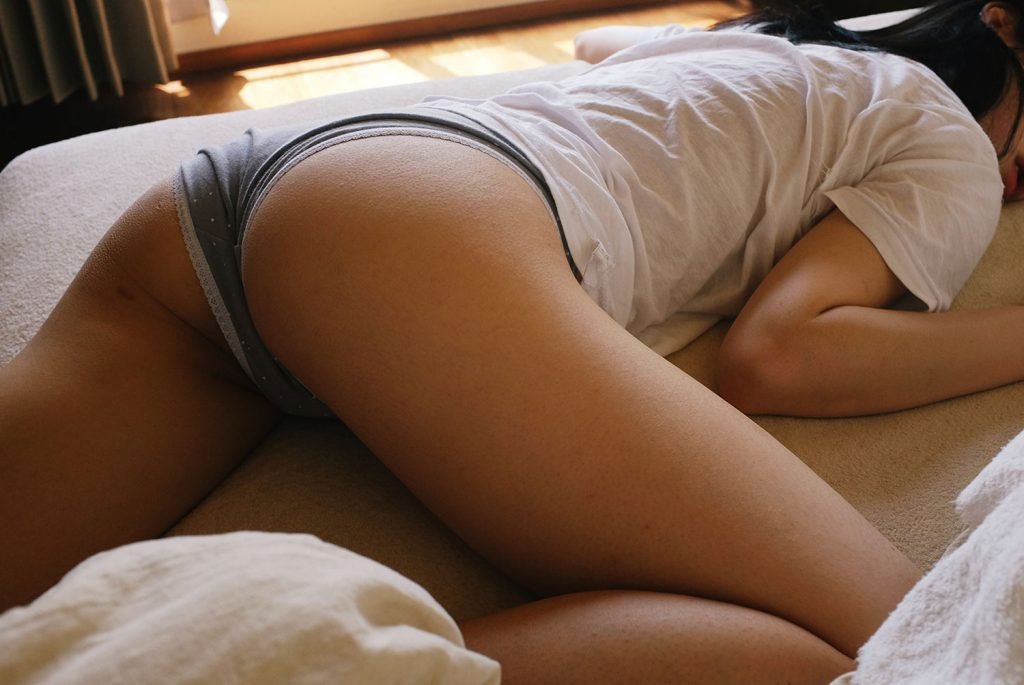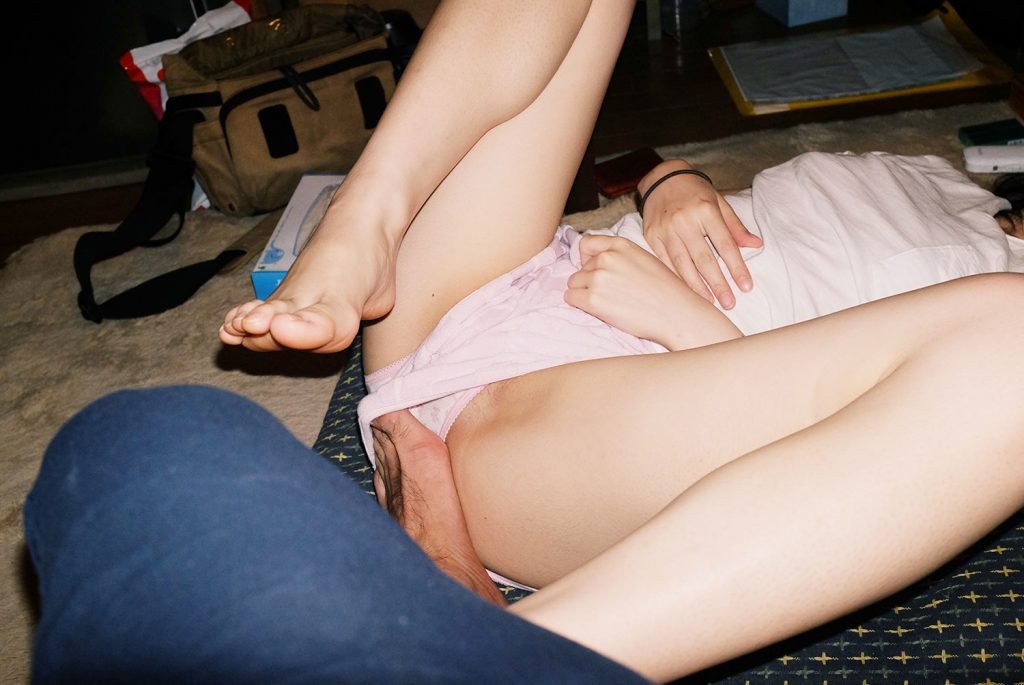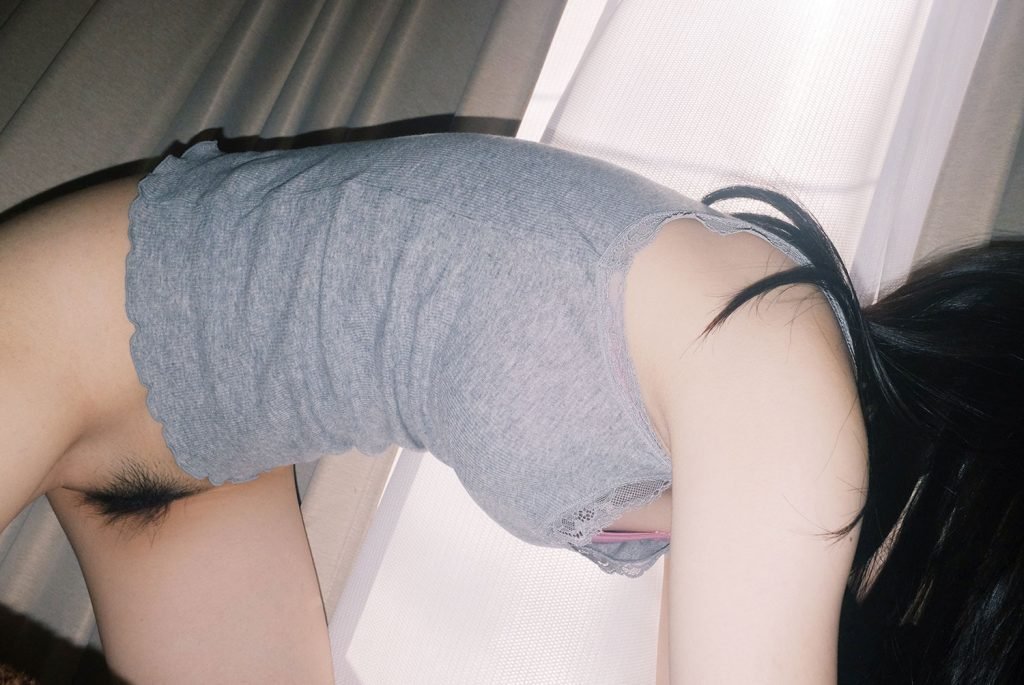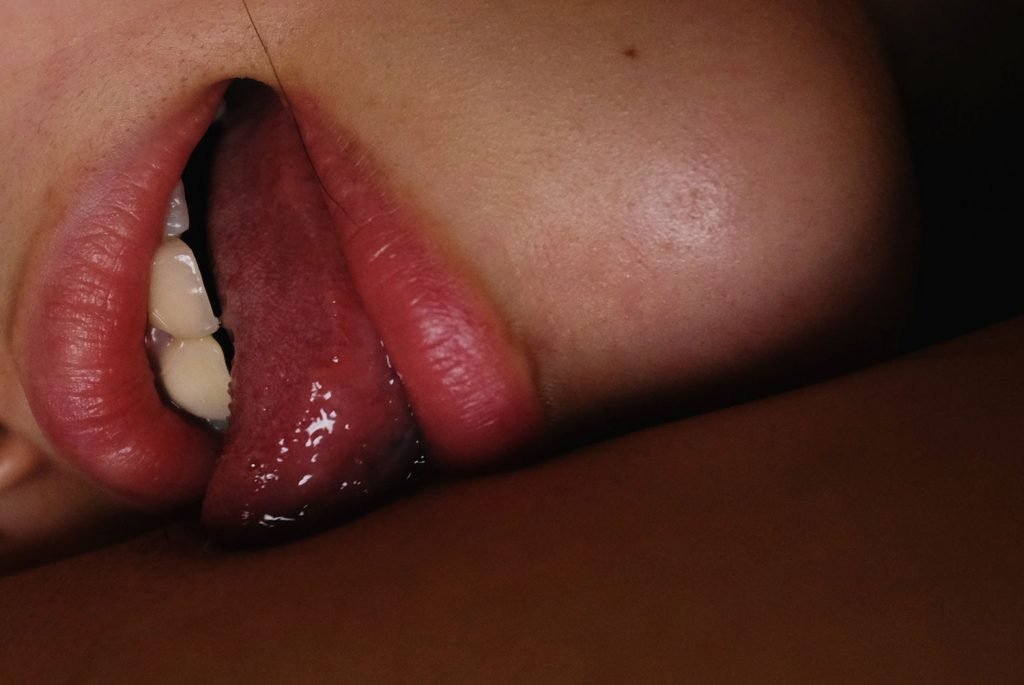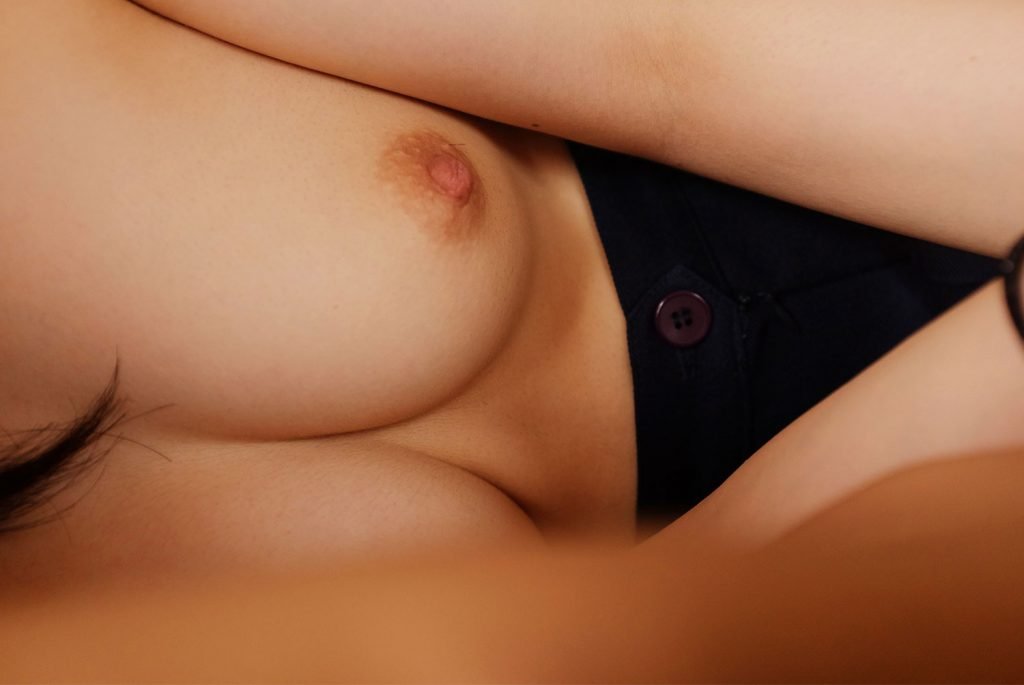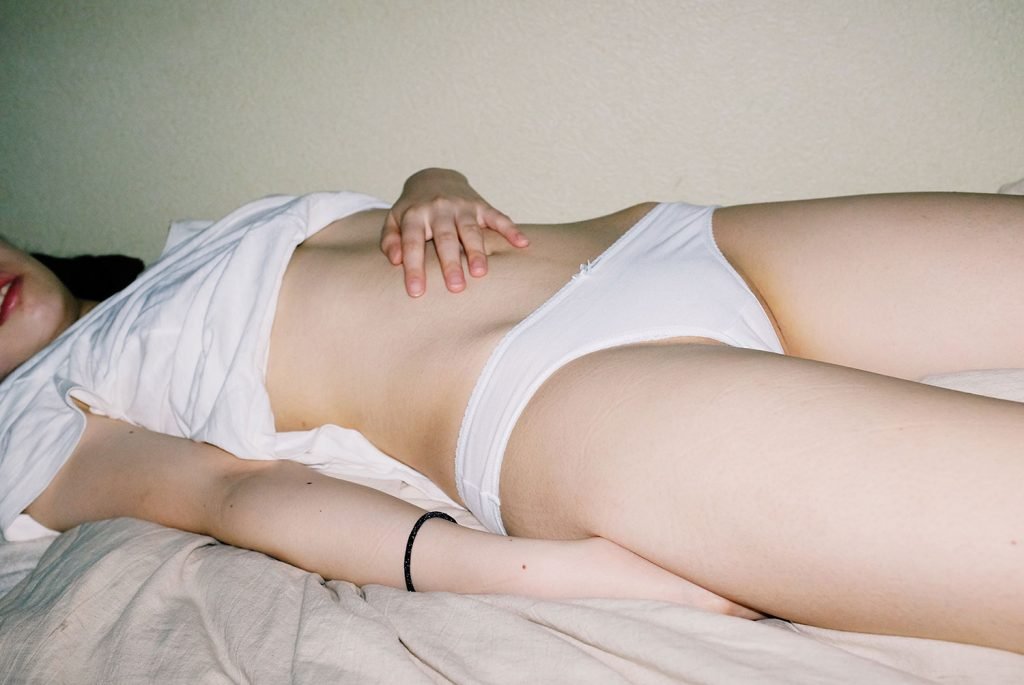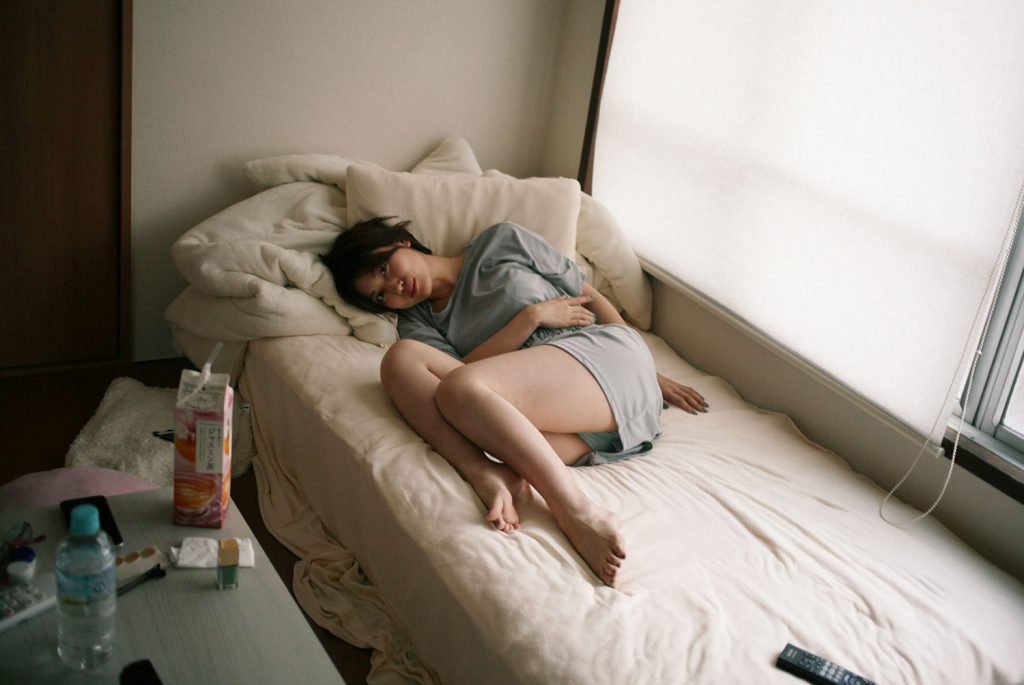Giangiacomo Cirla: Let’s start with the main theme of your work, the female body. What role does the female form play in your work, and what meaning does it express to you?
Yoshikazu Aizawa: I believe the basis of society starts with women. From my personal experience, the existence and role of women in modern day society are one of significant importance, directly influencing the world and in particular- men, with whom they give great purpose too. All of my personal work thus far has been a culmination of capturing these moments spent in observing women, of whom include my partner and many other female friends, everyday life and recording intimate details found within the ups and downs of their emotion and existence.
I am fully aware that my imagination and what I have produced through the medium of photography cannot be attributed solely to my talent or creativity, but to the ideas and emotions in which women express. I think the greatest effort I can put into my photographic expression is to continue watching and recording the women in my life, their movements and feelings, and to capture the moments shared between us within a photograph.
GC: Japan has a notable history and culture of erotic photography. What are your main references or influences?
YA: Personally, I haven’t studied a lot within art history or the like, but I do remember looking at ‘ukiyo-e’ and various erotic magazines earlier on in my life and being pulled towards this style of art. I think the emotions and experiences felt in my boyhood feel the same even today. These nostalgic emotions touch our hearts even as we get older.
In terms of photography, Nobuyoshi Araki is someone who I am directly influenced by and look up to dearly. There is an innate and dangerous fine line that Araki’s photography explores within the context of eroticism and fine art. To some, this style of capturing women can be seen as objectifying women’s bodies, however, I believe he respects the freedom of women more than anybody and this is evident through the work he has produced. When I shoot women, I can’t deny that I’m heavily influenced by Araki’s poetic expression and deep love for women.
GC: What other visual mediums have influenced your style?
YA: Other forms of visual art have not influenced me greatly. I have always felt that people, and in particular women, are art themselves. The most important thing for me is the existence of these women who have appeared in my life; shaping who I am today. I learn each time I communicate and connect with each woman. Contemporary artist Makoto Aida is also someone of whom I greatly respect. I often read his books and go to his exhibitions; however, I am not quite sure if my work is influenced by him.
GC: You started to dedicate yourself exclusively to photography around the age of 40, what was your process and approach to this medium?
YA: I became a freelance commercial photographer when I was 29. During this time, I wasn’t producing work that could be called art and simply did what was needed for the job assigned. As time went on, I started to create and explore my own personal work, but I didn’t have enough passion to release them or to show them to the public. When I entered into my late 30’s, the daunting feeling of aging and also experiencing the death of my relatives made me think deeply about what I want to leave behind in this world. I realized that I could impart a small part of ‘myself’ in this world by recording my surroundings and the people around me, immortalizing the moments I experienced.
Around this time, I met my partner, who appeared in my earlier days on Instagram. She had a really free mind and spirit, and was very clever. I would simply face her with my camera and press the shutter, and a beautiful moment would be captured. This intimate connection felt when photographing her without any special camera effects or techniques was really meaningful to me. Before, I had a strong mindset that professional camera techniques were needed to create good images. However, I was convinced that the true beauty within an image was in the emotion captured. We lived in the same house and spent every day together. From that time on, my understanding of photography spread far and wide, and I dedicated myself to shooting and recording the world around me.
GC: What is the meaning of photography and artistic expression for you?
YA: Within my own photographic practice at least, I don’t regard the expression of photography as art itself. The subject or moment captured in the photo is the art, but I think photography is just a recording medium. When I am able to rid myself of any fixed ideas and my egoist expressions and focus solely on shooting an image, there is a possibility that someone will regard it as art.
GC: How do you choose the subjects of your work and what relationship do you have with them?
YA: When I am faced with picking subjects, it is really the selfish part of me that selects certain subjects and photos. There is no definitive standard or formula I use when choosing a subject, and a lot of the time I will shoot someone instinctively when I want. I also appreciate building a relationship with someone who I can shoot with continuously over time. These women are really clever, sensible and provide sophisticated insight. They work very hard to enhance themselves and always seem to find a new attractive point even though they themselves already know how charming they are.
When facing my camera, they react and receive a lot of information through my words, face and actions. Through spending time communicating, there results in an unanticipated and candid moment of beautiful expression and natural movement. My role as a photographer is to observe, converse and capture the moment that becomes art. The existence of women is an absolute necessity for my living. I want to dedicate myself to shooting every moment with every woman who has given me their time, heart and soul.
GC: Are there any parts of the female body that interest you in particular? Do you have a kind of fetishism that is conveyed in your work?
YA: It really differs for each individual. I actually don’t have a specific fetish, but if I have to pick one, it would be the movement of the eyes and lips. I am careful not to let my desires take priority when shooting as it may take away the woman’s freedom of expression. My partner and many other women included actually don’t want their faces shown in photographs and prefer to have only their body shot. In a lot of my work, small details and specific parts of the body are captured. This is a result that is partly my own photographic style and also to respect the woman’s personal feelings and her choices.
GC: Your works convey sensations, emotions and, most importantly, a narrative of a place and time; how much work goes behind every single shot?
YA: It really depends. There are moments which took years of waiting to take from my first contact with the subject, and other times, beautiful moments will appear on the first day of meeting with someone. The most important thing for me is to always remind myself to break up any notions of what a ‘good’ photo is. I always have to keep myself alert and concentrate on the subject’s emotions which is an exhaustive process. Before shooting, I try to clear my mind from any premeditated ideas of what the photos should look like or what themes are explored. Their emotions are what is most important to me, which then become the themes explored in the photos. If I spend more energy pursuing their emotions, I am able to capture their beautiful and glowing figure. I don’t want to sully them by creating or fabricating an awkward theme made by myself, which would only result in an unnatural and fake moment.
GC: These aspects may not be evident to the superficial eye, does it bother you as to how your work is interpreted, or in some cases misunderstood?
YA: When people look at my images, their thoughts and interpretations are limited to their imagination and knowledge. A big factor as to why I do not write captions on my photos are to allow the audience’s interpretations to be as free as possible; letting the photograph speak for itself. Naturally, these interpretations can widely differ from my own imagination and veer far from the actual context and meaning behind my photographs. At first, when I started photographing women, I thought that maybe these women didn’t want to be misunderstood but they seem to enjoy the vast differences in interpretations, including the misunderstandings by the viewers. I admit that it is supernatural that there are people out there who see my work and are repulsed by it, describing it as vulgar. But, we are alive every day as human beings and living is not always pretty. Life can be animalistic and non-civilized, and I feel that it’s a beautiful thing. I know that there are people who like to be clean and noble, and won’t try to look at my work.
GC: This theme reappears within the world of social media, a place in which purports to be for freedom of expression, however censorship within these domains become heavily apparent particularly when it comes to nudity affecting both artists and models. What is your experience and what do you think about this?
YA: As far as I know, the expression and freedom of art have never achieved full mobility within history. I think artists from each era expressed their art within the confines and scope of politics and society’s control. There is also the fact that new expressions and ideas are born within the confines of these rules and the enforcement of censorship. But I feel that the censorship on some social media platforms picks and choose forcibly, lacking proper equity and fairness. At the same time as excluding my work, this censorship also affects and ignores the women in my photos. My gallery works as a practical use for their own self-expression as well. I don’t have animosity against the fact that my page was deleted and blocked, and I think this has something to do with my age and where I am at in my life right now. If I was younger and this happened to me, I would probably feel great bitterness.
GC: What are you working on at the moment?
YA: At the moment, I am mainly shooting my mother. Currently, she’s 74 years old and still healthy for her age, but time is running out and I feel the need to take pictures of her; to record her life and keep the memories of her. After all, she is the woman who gave birth to me. I don’t know what kind of work it will take shape into and I haven’t decided how to open this work to the public yet. I think this work will be my longest one yet. On top of this, I am continuing to record my time with my partner and female friends. It sounds simple, but it is actually really difficult to record the human relationship continuously. If I can continue this work, it will allow me to extend and better myself as a human. I am convinced that the expressions and emotions of every person by my side will become a piece of my work.
GC: If I say the word “woman”, what is your response?
YA: Indicator of my life.
From my mother, to every woman I’ve met, who has shown me the way to proceed.
Aizawa Yoshikazu is a Japanese photographer who currently lives in Tokyo, when he works, he respects girls’ autonomy more than his image.


